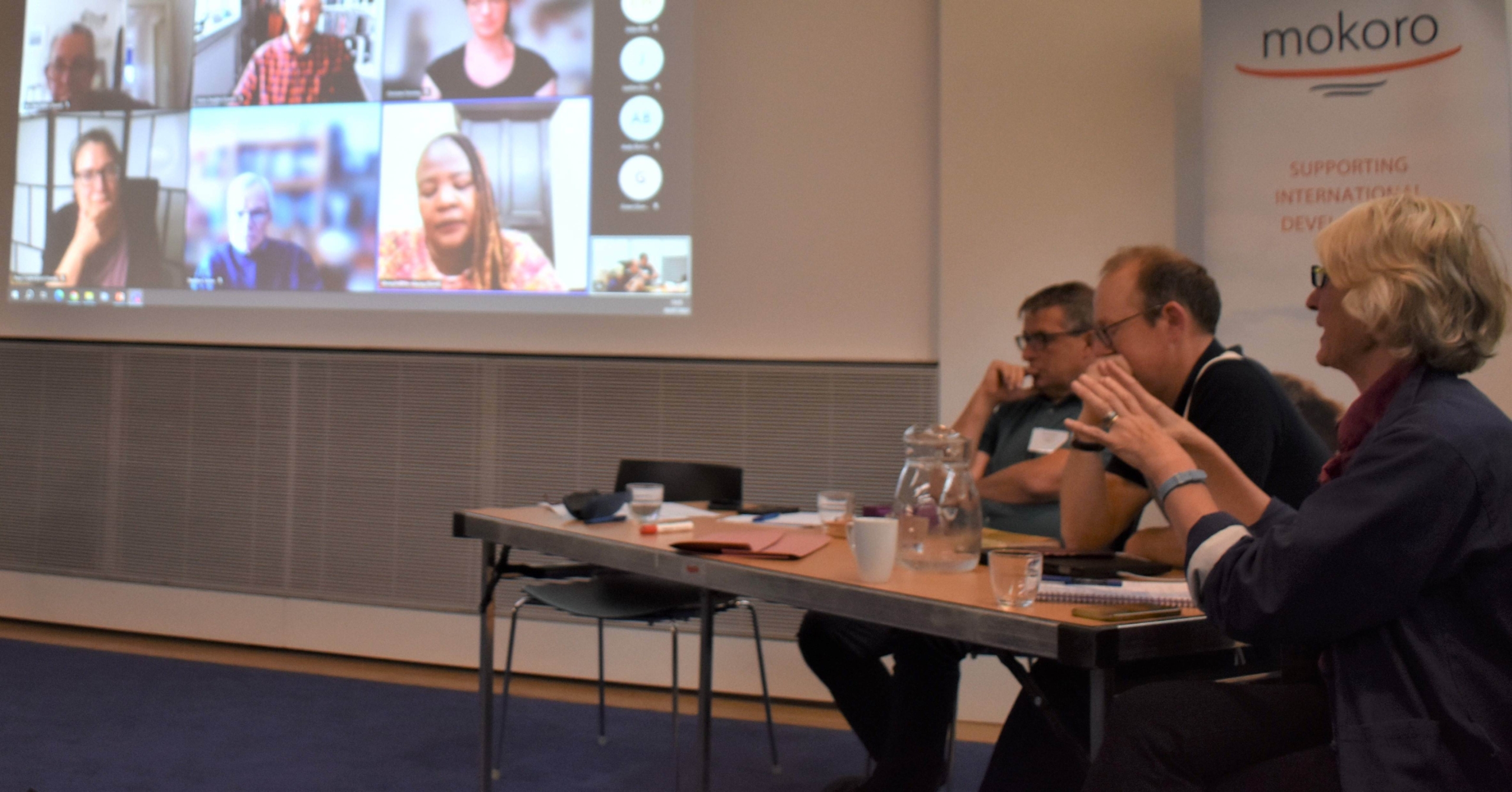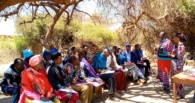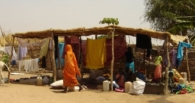SADC Regional Vulnerability Assessment and Analysis Programme
Preparation of the Strategic Plan and Funding Document: 2017-2021
Ray Purcell
26 January 2017
/
- 0 Comments
In the first part of 2016, Ray Purcell led a technical assistance team based in Botswana supporting the Regional Vulnerability Assessment and Analysis (RVAA) Programme of the Southern African Development Community (SADC), which included work on the preparation of the draft RVAA Strategic Plan. Here he describes some of the background to it and presents an extract from the Plan.
By way of technical background, simplified definitions of key terms in the context of RVAA include:
Vulnerability: the degree to which a livelihood system is likely to experience harm due to shock and stresses.
Resilience: the ability for livelihoods to adapt and recover from shocks and stresses.
Institutionally, the SADC RVAA Programme is coordinated from SADC HQ in Botswana. In the last ten to fifteen years, dealing with vulnerability in the SADC region has been very much about addressing the ever-present short-term (acute) effects of climate shocks, especially drought and to a lesser extent flooding.
Complexity in the preparation of the 2017-2021 RVAA Strategic Plan was present in abundance. The RVAA programme is multi-country with 14 out of the 15 SADC member states active in carrying out national Vulnerability Assessment and Analysis and there is a range of intersecting interests and actors in each country across government ministries, the UN, donors and NGOs. A common overall RVAA framework for vulnerability assessment provides for a country-led, multi-speed, menu of options approach to VAA which has resulted in a unified assessment being accepted for each member state, but there is huge analytical complexity within the overall framework, with different assessment methodologies being used in various permutations from country to country, including the Household Economy Approach (HEA), Family Early Warning Systems Network (FEWSNET), the Integrated Food Security Phase Classification (IPC) acute, IPC chronic, Comprehensive Food Security and Vulnerability Analysis (CFSVA), Household Vulnerability Index (HVI) and Individual Household Model (IHM).
A primary outstanding issue has been the unfulfilled intention introduced in the 2012-2016 Strategic Plan to add chronic vulnerability assessment to the traditional acute assessment.
Tacking on climate change as an issue to cover, where it is difficult to disentangle it from climate variation, is a challenge, as is identifying (climate) farming resilience options which are capable of being scaled up from piloting in individual communities to implementation among broader populations.
There was institutional complexity in the relationship between the SADC unit responsible for the implementation of the RVAA Strategic Plan and the TA contractor (Cardno) resident technical assistance team, and there were sometimes hard-to-reconcile sensitivities within the Strategic Plan preparation team. A mitigating factor for the team leader of this assignment was the excellent material and moral support provided by the Cardno technical assistance team.
The following extract from the Executive Summary of the 2017-2021 Strategic Plan provides an overview of its findings and direction:
“The Southern African Development Community (SADC) region continues to be afflicted by natural hazards that adversely affect food security, vulnerability and livelihoods. Southern and Eastern Africa has been particularly badly hit by drought and floods during this century including by the extended El Niño.
The proportion of food insecure households in the region remains high despite improved food production in some Member States. According to SADC vulnerability data, on average nearly 9% (i.e. 25.5 million people out of total population of 292 million) were food insecure between 2010/11 and 2014/15. And since 2010, the number of food insecure people in the SADC region has remained above 22.7 million on a gradually increasing trend.
At least half of SADC Member States experience chronic food insecurity. Poor staple and micronutrient food availability and access leads to various forms of widespread malnutrition. Amongst children under five, wasting rates in 2015 were above 5 percent in seven Member States and stunting rates were above 40% in four countries and above 20% in 12, including in some middle income countries.
Climate change risks for the SADC region are serious and exacerbate the factors affecting vulnerability. SADC countries are especially vulnerable to climate change because of dependency on subsistence agriculture, with over 95% of regional agriculture being rainfed. The Intergovernmental Panel on Climate Change (IPCC 2014) has identified rising trends for the African continent in annual mean, maximum and minimum temperatures during 1950-2000. And by the end of the 21st century, temperatures are projected to increase by 3–6°C under the IPCC high emission scenario. SADC estimates that 75–250 million people will be exposed to increasing water stress by 2020 due to decreasing rainfall. Important transboundary water resources are affected by climate change, and major rivers could become regional sources of tension.
The trend of increased food insecurity recorded over the last five years suggests that food insecurity is not simply a transitory phenomenon caused by short term, climatic shocks. The persistently high numbers indicate a deeper problem that goes beyond the impact of natural hazards to more structural underlying causes of vulnerability. This requires different and more complex vulnerability assessment and analysis (VAA) than that currently used to assess and analyse acute food insecurity.
Review of the 2012-2016 RVAA Programme
Over the last Strategic Plan period, the RVAA system has demonstrated strengths in facilitating and developing interagency and multisector processes for vulnerability assessment. Fourteen of the fifteen SADC Member States now have a National Vulnerability Assessment Committee (NVAC). And NVAC analysis is regularly used for targeting and responding to acute food insecurity crises.
VAA systems across the region have averted and mitigated a number of food crises. Since 2011, there have been severe droughts and floods in the region but no occurrence of widespread deaths or extreme morbidity. Millions of vulnerable households have benefited from Member State food security interventions responding to vulnerability assessments conducted by the NVACs. And VAA assessments are increasingly contributing to government initiatives to build the resilience of rural livelihoods through a broader range of measures
Design Issues
While a platform has been built for acute vulnerability analysis over the ten year lifetime of the RVAA programme, gaps and weaknesses in a number of areas constrain further evolution and development. Key design issues include:
- Broadening the scope of NVAC assessments to provide more comprehensive assessment and analysis of the causes of chronic vulnerability, especially in the light of climate change.
- Further integrating VAA systems into Member State administrative and financial structures.
- Strengthening technical capacity to integrate more complex issues such as climate change into VAA, together with a stronger emphasis on organisational learning.
- Ensuring effective integration of urban vulnerability, market, nutrition, gender and HIV aspects into vulnerability analysis.
- Reviewing the Centre of Excellence model (mainly universities) with a view to improving the engagement of Centres of Excellence in VAA as both providers of specialist training and value adders to VAA processes and products.
- Achieving further rigour of analysis and information, thereby helping to raise demand for NVAC products and NVAC political profiles, in order to secure greater and more predictable levels of domestic financing for institutional sustainability.
The SADC 2017-2021 RVAA Strategic Plan
This SADC RVAA 2017-2021 Strategic Plan has been developed tRPu_JAN17RPu_JAN17hrough extensive consultations with Member States and International Cooperating Partners (ICPs). The strategic direction of the current 2012-2016 Strategic Plan has focussed primarily on the assessment of acute vulnerability related to food insecurity. This has been highly relevant since large numbers of SADC Member State populations have been protected against extreme food shortages and malnutrition. However, there is unfinished business in both sustaining the quality of acute vulnerability assessment and in broadening the remit of NVACs to look at the causes of chronic vulnerability, thereby enhancing their relevance and contribution to poverty reduction.
The strategic direction of the 2017-2021 Strategic Plan therefore seeks to provide consolidation and continuity on the one hand, combined with broadening the scope and deepening the imprint of RVAA through greater integration and programmatic learning on the other.
The implementation approach will be Member State demand led, based on a menu of options responding to individual Member State priorities supported by a regional Programme Management Unit (PMU based in SADC HQ).
Consolidation and Continuity: Protecting the Gains of the RVAA Programme
The 2012-2016 RVAA programme has been effective in creating institutions and providing information for decision makers to address acute food insecurity at the national level. Multisectoral, interagency processes analysing food insecurity at national and regional levels have been key.
Building on these strengths, there are opportunities for improving the RVAA system and the quality of its outputs. Continued institutionalisation and capacity development will protect returns on existing RVAA investments in baseline analysis and acute vulnerability assessment while providing an entry point for deeper, more integrated analysis.
Broadening and Deepening the Scope of RVAA
Chronic vulnerability and climate resilient livelihoods were given a central place in the 2012-2016 RVAA Strategy. However, there has been little or no progress in NVACs providing evidence and information products to reducing poverty and vulnerability through climate resilient livelihoods. Having both the mandate and the capacity to contribute to Member State policies, strategies, and programmes dealing with poverty and vulnerability reduction through climate resilient livelihoods is of prime concern to many NVACs. The experience, capacity, information and data resources accumulated by the NVACs constitute a potential asset and opportunity for them to contribute meaningfully to longer term chronic vulnerability and poverty analysis.”
The latest news (January 2017) on the SADC RVAA Programme is that the Strategic Plan and Funding Document 2017-2021 was approved by SADC. UK DFID along with the Swiss Development Corporation (SDC) have agreed in principle to fund the RVAA Programme for the next five years as recommended in the Strategic Plan. At the time of writing DFID are in the process of finalising a Business Case for the new RVAA Programme, after which, all being well, it will be submitted for approval and funding by DFID in London. Subject to approval, the new programme should start by mid-2017.
You must be logged in to post a comment.



